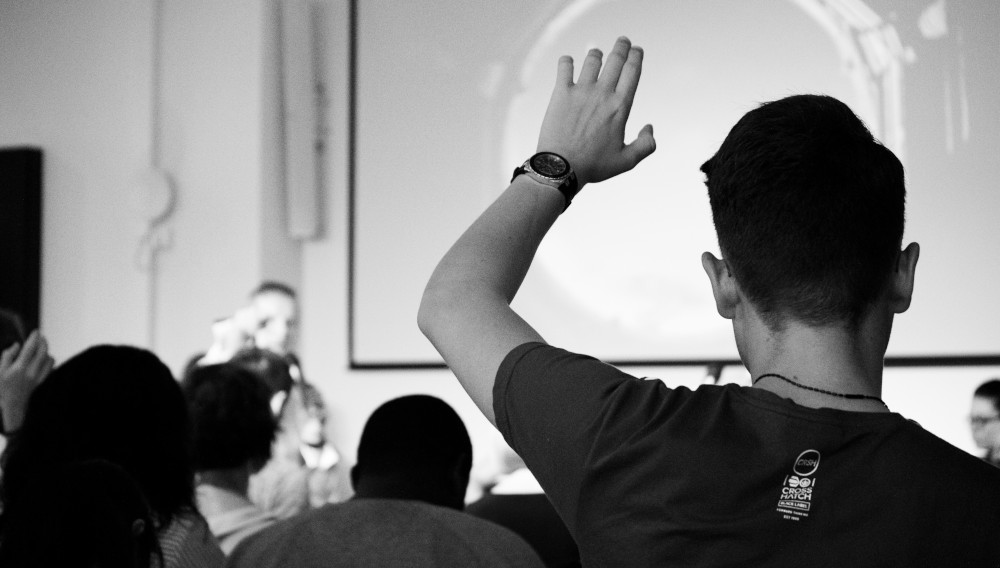
In this ‘Spotlight on Practice Worth Sharing’ post, Dr Kelly Stone, a lecturer in the Moray House School of Education and Sport, shares some approaches that she has tried to make large lectures more interactive…
In a recent Practice Worth Sharing seminar, we discussed how to make large lectures more interactive. I have been trying to develop and improve this area of my practice for the past few years, for a few key reasons:
- Feedback from first year undergraduate students indicated that they preferred lectures in which discussion spaces were created.
- My discomfort with the traditional lecture format of talking ‘at’ students and dominating the discussion for 50 minutes.
- The disconnect between what we tell students about what counts as ‘good teaching’ versus how we then teach in lectures.
I have tried a few approaches to make large lecture mores interactive, with varying degrees of success. Discussion prompt questions or topics can work well to encourage students to reflect on their learning and their practice at different points in the lecture, but not all students participate by talking to others, or about the issue under discussion.
As children’s literature is one of the main areas of my teaching, I have tried using Aidan Chambers’ ‘Tell me…’ approach for responding to texts, based on ‘the three sharings’ of puzzles, enthusiasms and making connections. This has worked reasonably well, and it enables students to apply this model to their own learning and reflection.
I have limited experience of using technology in lectures (Padlet rather than Top Hat), mainly due to my lack of confidence in persevering due to students’ apparent lack of interest (evidenced by students’ post reading ‘Why are we doing this?’). Using short film clips that are connected to the lecture material has worked very well at engaging students to discuss the issues raised and their responses, although I have likely rushed the students back to listening to me, rather than allowing more time and space for them to talk.
In terms of next steps, I’ve been inspired by Professor Heather McQueen’s ‘quectures’ approach and would love to try this out, to encourage students to actively question the lecture material and to make personal learning connections using a critical reflective approach.
I would also like to explore in more depth students’ perceptions of what they think ‘interaction in lectures’ means, as a recent post-lecture conversation with a student made me challenge my assumptions. Perhaps approaches that we use as part of our regular practice, such as stopping regularly to check students’ understanding and inviting them to disagree with us and offer counter-views, might be perceived by students as interactive, and make them feel they are actively involved rather than passively listening.
Comment from Facilitator: Dr Deborah Holt
Dr Kelly Stone’s open and honest presentation promoted a stimulating discussion on what constitutes an interactive lecture. One participant spoke of how she brings in something random to display at the start of the lecture, for example, a range of images or a puzzle. This provokes thought and introduces the theme. Another participant told us how they send students a survey in advance asking them to identify development needs and aspects of the course they would like to see in the forthcoming lecture. This forms the basis of the next lecture. This is interactivity in a very different way.



